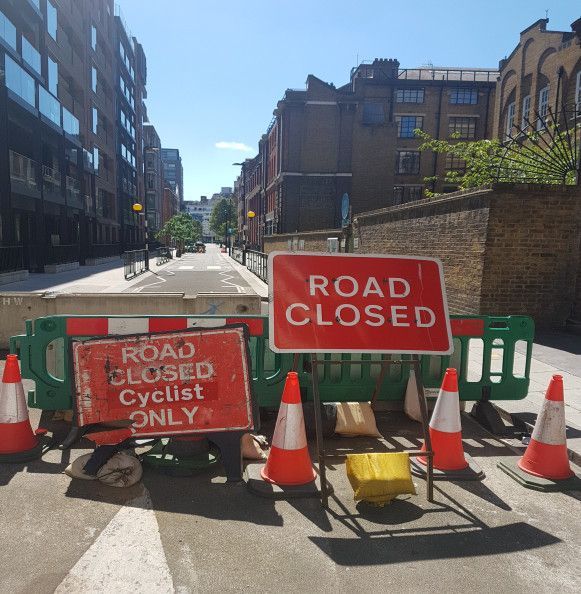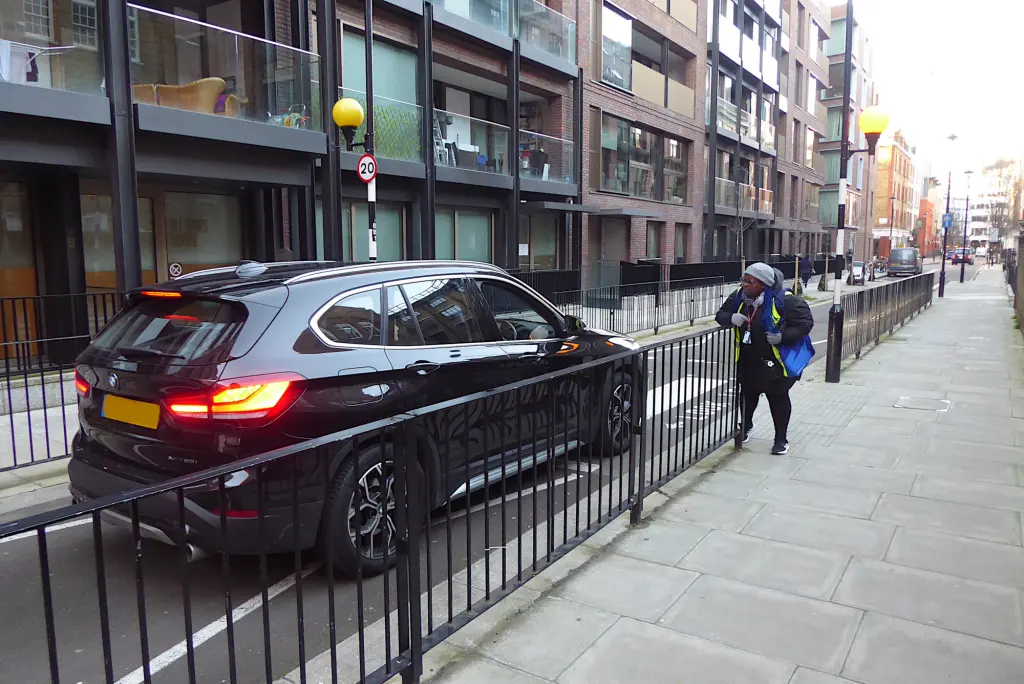Westminster School Streets: who are they serving?
While national government and authorities across the country are re-prioritising hierarchy of road users, Westminster Council have decided to open up a second road in the borough to motor traffic. Tell Westminster City Council it needs to urgently make this school street safe.

Part of Riding House Street has been closed to motor traffic for several years outside All Souls C of E Primary school and a block of housing association flats. During this time the extra space was used by the children and their parents to socialise before and after school. The closure to motor traffic also allowed children to access the school annex site across the street without having to be escorted and running the gauntlet of drivers. Children of local residents also used the street to play in.
But at the end of December 2021 the concrete barriers at the end of the street were removed, and a temporary road closure scheme - a School Street was put in its place.
This new scheme allowed vehicles to use it as a through-route outside the hours of 8.30am - 5.30pm. This was ostensibly to provide access to servicing vehicles, although this opens up a route for motorists wishing to avoid traffic lights along parallel main routes throughout the day, as the closure is not consistently enforced.
So how did this get approved? A Freedom of Information request revealed that there were 58 responses to the consultation in April 2020, 24 of which apparently came from residents who live on the street objecting to the closure. Despite many of these responses being virtually identical and not containing any reasoning, their geographical proximity to the street means their responses apparently “carry more weight”.
Given this statement, you might expect the School to have been recognised as a key stakeholder in the consultation. However Westminster City Council completely failed to take the School’s views into account when consulting on the scheme.
This is despite the fact that children as young as 3 years old frequently have to cross the street to access an adjacent hall.
To us, this looks like a classic case of a consultation being “gamed”. Why did the council not see straight through this and make a decision based on objective reasoning and inline with their own policies?
This scheme was introduced on the premise that the road would be made safer. However, on the first day of term, the only protection against drivers using the road was a solitary Westminster Council officer.
Good thing too, as eyewitnesses say that at least one driver was stopped when driving at speed down the road despite signs saying the road was closed. When stopped and told to reverse back out, the driver merely apologised and continued through.

How many more drivers are going to put their needs above vulnerable road users? How many more drivers are going to prevent school children – who regularly used to play in the street before it was reopened – from feeling safe in the borough? The school has since informed us that several drivers of cars, vans, and motorcycles have continued to ignore the signs during school times.
The Officer enforcement is only present for the first few days of term - how many more incidents like this are likely to happen and all for what gain? Service deliveries?
Westminster Council had the opportunity to show that they genuinely care about children’s safety and the climate crisis. Instead, they decided to take a step backward; it’s clear who they place at the top of their road hierarchy.
Comments can be made on the current Experimental Traffic Order by emailing tmo.westminster@wsp.com quoting 7654/11 or clicking the button below.